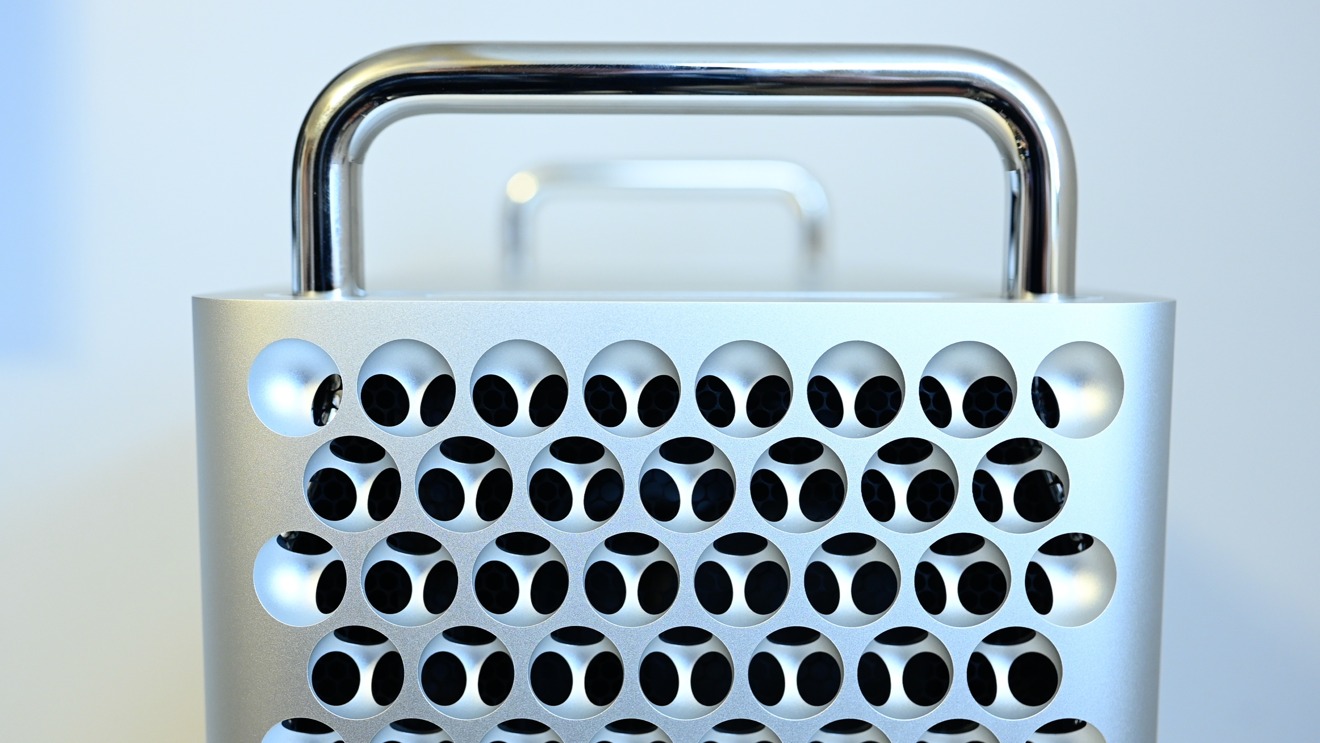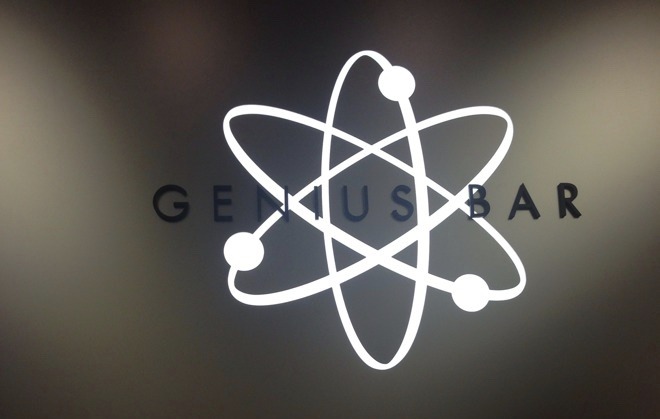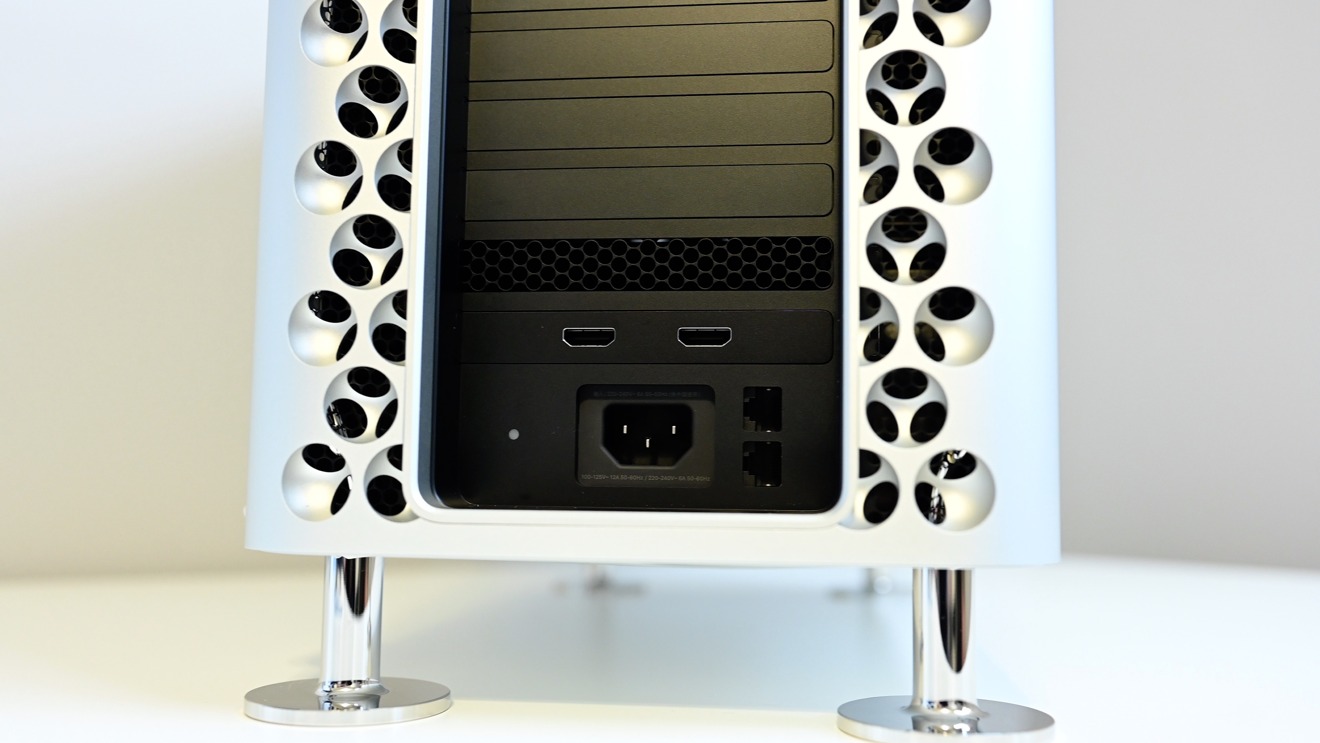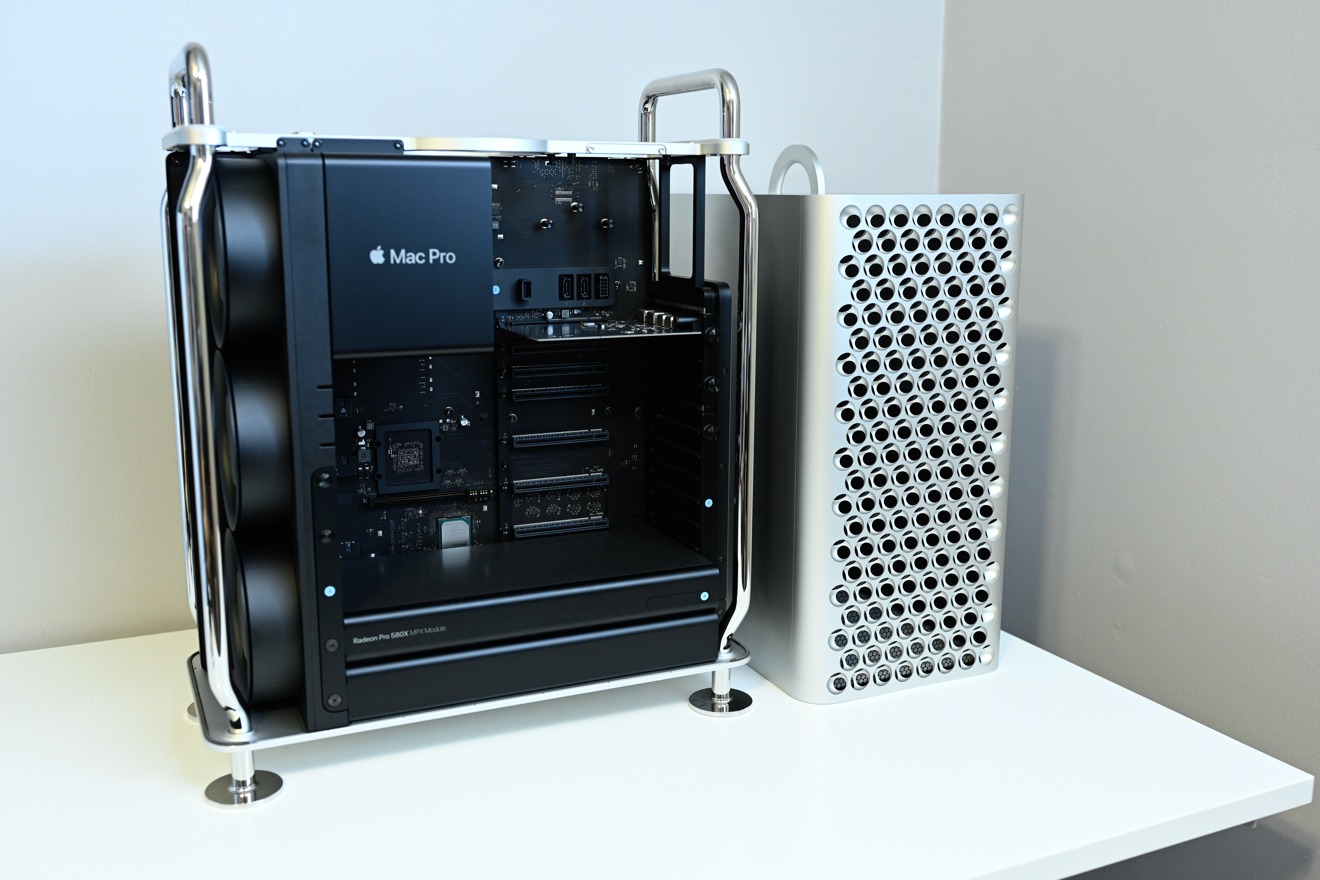The limited production and penetration of the Mac Pro has an unfortunate side-effect — much of Apple's service network is unable to support the machine properly if something goes wrong.
Recently, the AppleInsider production Mac Pro started acting up. In an attempt to get our machine repaired, we went through the typical Apple support route. This has highlighted the shortcomings of Apple's traditionally exceptional customer experience.
It started with a chat
The crusade started down the route with the lowest barrier to entry — an Apple Support chat. Apple goes out of its way to make the process fairly easy where it can, for example identifying our Mac Pro automatically and entering the information about it in the support portal. Unfortunately, from there, it went off the rails.
We were quickly connected to a support agent who was pleasant and reassuring that this issue would be a non-issue and she could quickly resolve it. That was before she saw it was a Mac Pro and she informed us that Mac Pros were serviced by a special team, only available by phone, but she was happy to set up a call with them.
For something that we hoped to be an easy issue, this was a more imposing next step. Our new Apple support agent was as pleasant as the first and he assured us he would happily look into this for us. He put us on hold for a few moments as he delved into the details of the case thus far.
Here, we ran into yet another roadblock. This agent was not the appropriate support representative we needed and was unable to help us with the Mac Pro, once again. The dedicated Mac Pro team was not available for the day yet so he had to schedule yet another callback with them once they were.
A half-hour later we receive a call from the same support agent.
Apparently, he was unable to schedule a call with the appropriate team because he "doesn't work with them" and was only able to transfer us once we were on the line. So, he stayed with the ticket, called us back himself, then reached out to the Mac Pro support team.
We finally were put in contact with the right team who were eager to help us out. Once again, the support agent was as nice as can be and quite reassuring. Unfortunately, the rep still didn't seem very familiar with the new Mac Pro.
He was following a set of scripted solutions that didn't quite make sense and wasn't sure where different parts were on the Mac Pro itself. At one point he starts instructing us on a hack to run the machine without the case on before he abandons it saying "this is too much for a consumer to do."
The call ends with a referral to the Apple Store where they are able to run additional tests for Apple's engineers. He assisted us in scheduling the appointment for the following day.
Bringing the Mac Pro into the Apple Store
We arrive at the Apple Store, toting the Mac Pro by its massive stainless steel handles. An employee rushes out the door to carry it in for us as we entertain looks from all the employees, none of which had seen a 2019 Mac Pro lugged in by a customer before.
Still waiting for the Genius, an Apple technician came over to procure the serial number from our machine. He looked around the body before giving up, saying they'd just get it once the machine boots up.
After only a short wait, the Genius shows up, a friendly young woman, equipped with several cables and a monitor. We exchange pleasantries and explain the situation while she connected the Mac to an LG UltraFine display.
Here, we ran into yet another roadblock. The Genius connected a standard power cable to the Mac Pro, which then refused to turn on. It wasn't capable of delivering enough power to the machine and they didn't have any Mac Pro power cables in the store, even "backstage."
In a futile attempt, the Genius tried to power up the Mac Pro then by using a 90W USB-C power brick from a MacBook Pro and connecting it to one of the four Thunderbolt 3 ports. We don't even know why she tried this, as there was no earthly way that this was going to work.
Fortunately, we brought the power cable along for the trip.
Multiple Genius technicians worked together to try solving the issue before deciding it needs a physical repair. But, they couldn't come to a consensus, so they escalated it to the next level of support.
Since then, the machine has been checked in to the Apple Store as they work to resolve our issues, with no resolution as of yet beyond an iffy suggestion that doesn't make any sense. The bumpy path is an issue for users of Apple's top-of-the-line Mac, and it isn't just our experience.
Mac Pro service at the Apple Store and elsewhere
We'd been hearing conflicting reports about the service chain's readiness to support the Mac Pro. Following our own experience, we started looking a bit deeper.
This isn't a case of training or parts not being available at the Apple Store — because they can be. In the largest Apple Retail stores there are only one or two people that have completed the training.
Some Apple Stores don't have anybody at all trained. In the 27 Apple Stores that we have data on, five have two people trained, 10 have one, and the remainder have zero. The 15 stores that have trained Geniuses are larger and support more consumers than the 12 that don't. Aggravating this situation, is not all of the trained personnel are full-time, or have a predictable availability.
Based on our conversations, repairs are generally done in-house, assuming that there are trained personnel available to do them. Based on our conversations, the rest of the Apple Store-supported repairs involve shipping the machine to the depot, leading to multiple-day turn-around times.
Additionally, as we practically demonstrated, phone support is problematic, and mostly limited to "banker's hours" in the United States. This is worse internationally, with the phone support window being mostly outside working hours in the UK.
This leaves individual owners of a Mac Pro that have not signed a big-dollar support contract swinging in the wind if they need to request support.
If you're a long-time reader, you may be remembering something back around two years ago regarding the iMac Pro. Back then, a YouTuber accidentally destroyed his iMac Pro while disassembling it, and requested repair. After a series of miscommunications and bad assumptions on both sides of the service desk, Apple ultimately wouldn't repair the machine, as it was more cost-effective given service part established pricing to buy a new unit.
At the time, there was much more in the way of training and parts support for the iMac Pro then there is the Mac Pro now. But, there were more iMac Pro units in the wild then by what appears to be an order of magnitude, then there are of the Mac Pro at present.
The Mac Pro service situation is inexcusable — today
On the whole, Apple's consumer-oriented support is ill-equipped to handle even basic support cases for the Mac Pro. But, like we've said, this machine isn't for everybody, and is a minute percentage of what Apple sees day-to-day.
This doesn't excuse what we've seen, and have heard about, though.
So, in total, low-volume users can't get support via chat, the phone team isn't able to schedule callbacks with the appropriate Mac Pro team, most Apple Retail locations don't have power cables to boot up the Mac Pro, Genius technicians in-store haven't seen a Mac Pro and don't know the basics such as where to find the serial number — let alone determine what repairs may need to be done. The fact a Genius attempted to power the Mac Pro via a USB-C power brick shines a glaring light on how poorly equipped the rank and file are to handle Mac Pro support cases that come in.
But — this isn't universal. The key is to connect with the people that have more experience with the Mac Pro. In this case, it is the business-oriented Apple Specialist. Not every Specialist will have Mac Pro experience, so asking some pointed questions is in order, prior to lugging your machine in.
Plus, Apple Specialists can do things that the Apple Store does not — like on-site service and diagnosis. The cost of the labor and site visit in this case isn't covered under the one-year warranty, and the Specialist won't have the repair part until the machine is diagnosed based on how "Core" repair part returns work, which we have discussed at some length before.
Even with two visits by a technician, this can be much quicker than a depot-level repair of a Mac Pro. And, assuming you've asked before the visit, the support will be done by somebody with more experience supporting the Mac Pro.
Support for the Mac Pro in enterprise is excellent. The knowledge is there in that support chain, and getting help is easy. It had better be, as there is big money exchanging hands for this level of support, though. This is not the case on a smaller scale, and a studio or design shop with one Mac Pro will have trouble right now, as we've practically demonstrated.
There are enough Mac Pros in small studios to support better training now at the Genius Bars that span the world. There are enough in the field now, that aren't supported by AppleCare or an expensive Pro-level service contract, to justify better communications up and down the entire chain, for that matter.
But, today, the service and support process for single Mac Pro installs is a mess from the start of the process to the end. Most Apple Store techs are not prepared, supplies aren't readily available, and users are left navigating a treacherous labyrinth as they try to get service for their machine that starts at $5999.
 Mike Wuerthele and Andrew O'Hara
Mike Wuerthele and Andrew O'Hara










-m.jpg)






 Christine McKee
Christine McKee
 Marko Zivkovic
Marko Zivkovic
 Mike Wuerthele
Mike Wuerthele

 Amber Neely
Amber Neely
 Sponsored Content
Sponsored Content
 Wesley Hilliard
Wesley Hilliard










50 Comments
I've been wanting a new MacPro, but something has held me off buying one. After reading this story I think I'll wait a few more months until things settle a bit and the corona virus eventually passes. Seems we're heading into chaos territory across the board - both in business and in life. Hope you get your machine fixed soon!
Before I retired and closed my business, all our Apple equipment was purchased through the Apple Business division, not the local store. If something went wrong we had a hotline.
One day I recall, an Apple 30" monitor died in the middle of production for an ESPN show we were editing at around 4 p.m. and I called the business support line. We received a replacement at 8 a.m. the next morning before work began along with special packing for the dead one and Apple collected that the next day.
Has Apple closed its business division? Do professional clients now carry a Mac Pro to their local store? Really?
I'm waiting for Apple to do what once the Feds should have done already and break Apple Inc up into pieces. Each piece would perform and innovate the way Apple did before it became a titan. This is a classic case of a corporation which has extended itself too far under the same management and the cracks are showing. The iPhone has one competitor and fortunately for Apple Samsung does not have the foothold it probably should have in the US. I'm pretty sure most people reading this remember a time when Apple was thrilling to watch. Their products wowed us. The iPhone has become a product like the original iMac, stuck in a form factor for years on end and relying on new colors to distinguish the year's model from the last. Most of what Apple launches today is highly flawed and desperate to repeat another companies lead in that market. If it were not for it's "monopoly" iOS/iPhone products and services like Apple Music, Apple TV+ would have died on the vine. Speaking of vines, if you know anything about plants you know that pruning now and then keeps the plant healthy and producing a new crop. Apple it's time to prune back and make something sweet again.